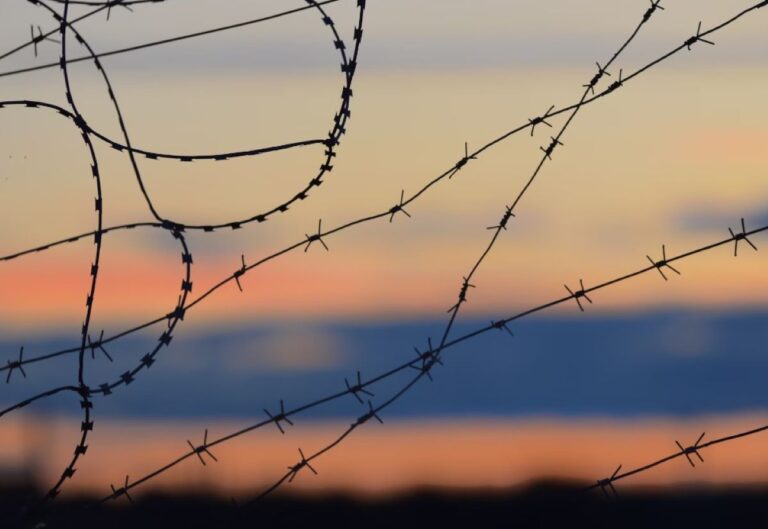In 2024, global conflicts increased by 12% compared to 2022 and by 40% compared to 2020. One in six individuals now lives in an area experiencing active conflict.
Among the 234 countries and territories analyzed by ACLED, the majority – 168 – witnessed at least one conflict episode in 2023. The data reveals over 147,000 conflict events and at least 167,800 casualties.
Table of Contents
The Conflict Index: an overview
The Conflict Index, periodically compiled by ACLED, evaluates each country and territory worldwide based on the analysis of data on political violence events collected over the last year.
The top 50 classified countries and territories are experiencing extreme, high, or turbulent levels of conflict. This index provides a comprehensive picture of global conflict trends, allowing for comparisons and insights into the changing dynamics of violence worldwide.
Factors behind conflict intensity
Conflicts vary significantly in terms of intensity, frequency, and form. Due to these variations, comparing the number of events directly can lead to distorted conclusions.
The 2024 update of ACLED’s Conflict Index evaluates conflict levels based on four key indicators: mortality, danger to civilians, geographic spread of conflict, and fragmentation of armed groups.
These indicators offer a more nuanced understanding of each conflict’s severity and impact.
The most affected countries
The highest levels of conflict are found in the top 50 countries listed in the index. These countries, classified as experiencing “extreme,” “high,” or “turbulent” levels of conflict, account for 97% of all recorded conflict events in the past 12 months. Extremely violent countries alone represent 40% of all conflicts.
Myanmar
Myanmar remains the most violent country overall, characterized by significant fragmentation due to the formation of numerous small militias following the 2021 coup. This high level of fragmentation makes the conflict in Myanmar particularly complex and difficult to resolve.
Syria and Palestine
Syria is the second most conflict-ridden country, facing multiple ongoing conflicts within its borders. Palestine’s conflict is extensive, covering nearly all its territories, and is now considered the most “widespread” conflict due to the severe and prolonged violence, particularly the extensive and deadly war with Israel primarily in Gaza.
Mexico
Mexico continues to be the most dangerous country for civilians, who are frequently targeted by violent cartels. This situation highlights the significant threat posed by non-state actors and organized crime in regions beyond traditional warzones.
Ukraine
Ukraine has the highest number of casualties, with both Ukrainian and Russian forces suffering tens of thousands of losses. However, as of October 7, Gaza has surpassed Ukraine in terms of total victim count due to the recent escalations in violence.
Read also: Over 34.000 dead in Gaza since October 7th 2023 and more than 77.000 injured
Regional perspectives on extreme violence
The following regions are experiences extreme violence conflicts:
Africa: Nigeria and Sudan
In Africa, Nigeria and Sudan are the two countries experiencing extreme violence. The situation in Sudan continues to deteriorate, with mass killings being a notable feature of the conflict.
The Middle East: persistent Instability
The Middle East remains highly volatile with Palestine, Yemen, and Syria all experiencing extreme levels of conflict. These countries have long been plagued by deep-seated issues and persistent violence, which have been exacerbated by recent events.
Asia: Myanmar’s complex conflict
Myanmar is the only Asian country classified under extreme violence. Its conflict is particularly challenging due to the multitude of armed groups and the significant fragmentation within the country.
Latin America: crime and corruption
In Latin America, Mexico, Brazil, Colombia, and Haiti are among the most violent. Except for Haiti, these countries are considered relatively stable democracies and market economies, yet they are severely destabilized by criminal gangs, contested authorities, corruption, and violence against civilians.
Unlike traditional large-scale wars, these regions experience numerous smaller, yet deadly and pervasive, conflicts.
Characteristics of persistent conflicts
Small-scale conflicts, often characterized by numerous armed groups and complex agendas, continue to be a major source of instability in both developing and developed nations.
These groups typically seek power and control over territory rather than pursuing governance, representing weaker sectors, or transforming the political system towards democracy and justice. Violence remains their most effective tool.
Changes in conflict levels
As of January 2024, 15 countries have improved their Conflict Index ranking over the five-year period from 2019 to 2023, while 16 have seen a deterioration in conflict levels.
Sixteen countries remained stable in the “extreme” or “high” conflict categories, showing no change between 2019 and 2023.
Overall, among the 50 countries ranked highest in the Conflict Index, more than half (42) are experiencing prolonged or escalating conflict situations compared to 2019.












